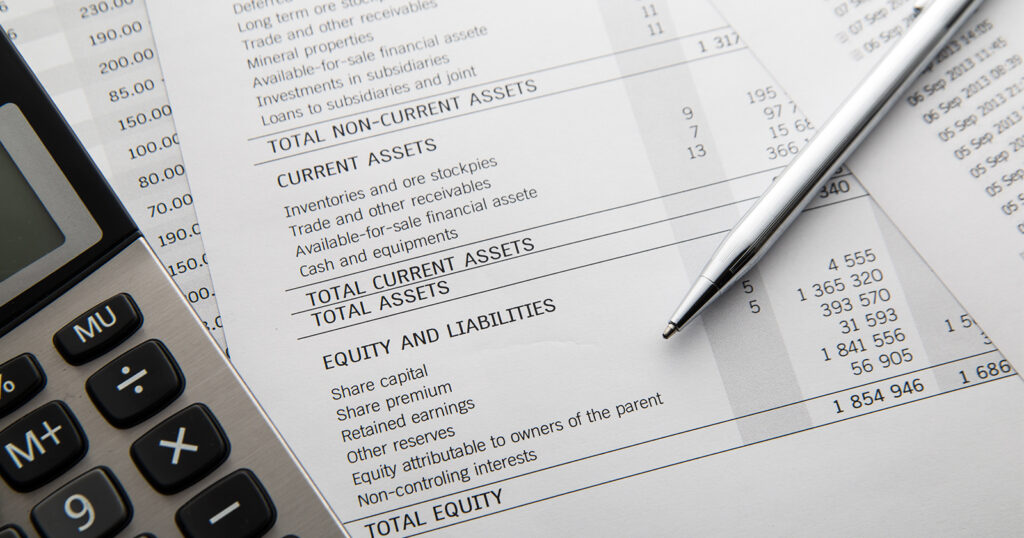A cash flow statement presents a ton of information on how a company uses its liquidity. It’s considered to be one of the main statements along with the balance sheet and income statement. It’s also the statement that usually causes the most issues for accountants to prepare. How commonly do you draft a cash flow statement and think you included everything but it doesn’t roll? Don’t worry, it happens to everyone and we all get stuck sometimes. In this article, we will look at some common mistakes and fixes that could help in getting your cash flow statement reconciled and free of discrepancies.

Summary Recap on Cash Flow Statement
Before getting into the issues and fixes of the cash flow statement, let’s have a recap on the cash flow statement itself.
Cash flow statements are split into three sections:
- Operating activities: relates to the core activities that generates revenue for a company
- Investing activities: anything related to investing in assets either for gain or to improve the core activities of a company
- Financing activities: relates to money obtained from investors or loans in order to run the company
Remember, the ultimate goal is to show the trail of cash going in and out of a company for a financial period so we need to be able to reconcile the beginning cash balance to the ending cash balance.
The statement of cash flows can be prepared using the direct method or the indirect method. The difference in methods only affects how to account for the operating activities. The direct method is a bit more laborious since it requires the actual cash flows going in and out of the company to be listed. The indirect method, which is the most popular and standard method adopted across industries, takes the net income and adjusts it by adding any noncash transactions and changes to balance sheet accounts (or often known as the working capital accounts).
A cash flow statement is always prepared after the balance sheet and income statement have been completed since information within the balance sheet and income statement can be used to prepare the cash flow statement.
Read More:
Cash Flow Statement: Indirect Method [Explained & Example]
Cash Flow Statement: Direct Method [Explained with Example]
Common Issues and How To Fix Them

Every single accountant has had moments where their cash flow statements don’t reconcile leaving them wondering why there are discrepancies. Although the discrepancies could be very dependent on the company and its operations, let’s run through a list of steps to fix some common issues.
- Before starting to dig into why cash is not balancing, make sure the mathematical calculations work. It might sound like a no-brainer but mathematical errors happen, we might have omitted to include a row or added a row twice by mistake.
- When using the indirect method, pay attention to the increase/decrease in assets and liabilities that are included in the operating activities. It’s very easy to mistakenly add an item when it should have been deducted and vice versa. For example, it’s very common to mistakenly add the increase in assets instead of deducting it. Remember that increase in asset accounts means there’s less cash in the company because the company has used the cash (outflow) to increase its assets. For liabilities, it’s more intuitive, an increase in liability accounts means the company is accumulating more debt without outflow of cash.
- Increase in assets = deducted in the cash flow
- Decrease in assets = addition in the cash flow
- Increase in liabilities = addition in the cash flow
- Decrease in liabilities = deducted in the cash flow
- Check that all non-cash transactions are removed from the cash flow statement. There’s a reason it’s called the cash flow statements; it’s focused on cash transactions. Any non-cash transactions that are mistakenly included in the cash flow will create discrepancies. Non-cash transactions can vary from a company to another but popular examples are the depreciation expenses, unrealized or realized gains/losses on disposal of investments. As such, in the reconciliation between the net income and the cash flows from operating activities, any expenses or losses that are non-cash need to be added back to the net income and any revenues or gains that are non-cash need to be deducted from the net income.
- If a company deals with foreign exchange transactions, remember to reflect the gains or losses from foreign exchange transactions as a reconciling item between the net income and the cash flows from operating activities. Similar to the logic in #3, gains or losses from foreign exchange are not real cash transactions.
Cash Flow Statement: Final Thoughts
Encountering issues and being stuck on the cash flow statement is not a walk in the park. There are tons of transactions going through a company every year so figuring out why the cash balance can’t be reconciled can be difficult. When that happens, there’s nothing to be discouraged about. Simply go back to the basics and remember the theory behind the cash flow statement. Verify the inputs used to prepare the cash flow statement and follow our help guide to avoid any common issues. In the end, there’s no cash flow statement that can’t be reconciled.



